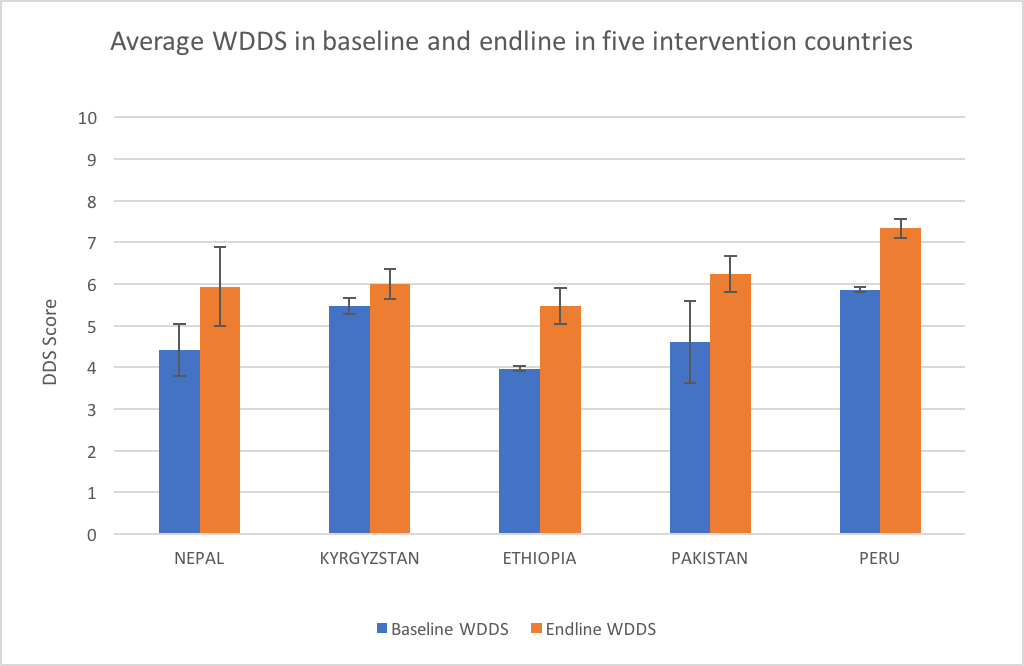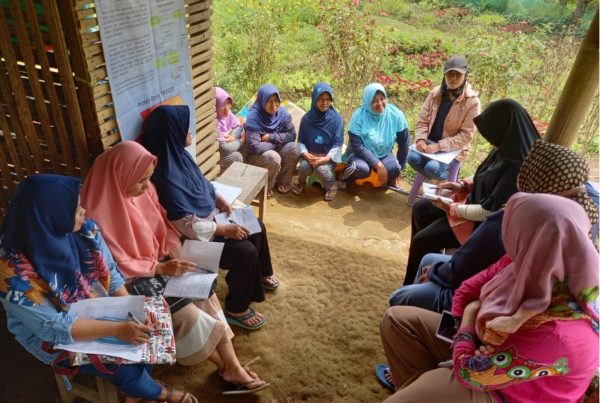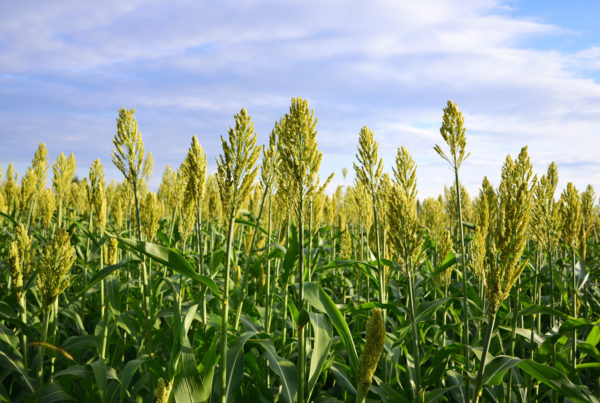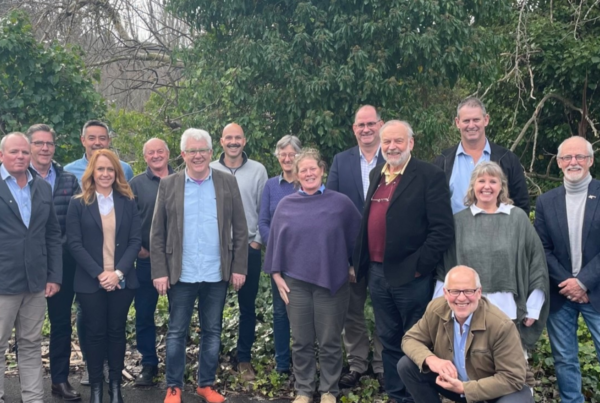Many people living in mountain regions of low and middle-income countries are vulnerable to food and nutrition insecurity. Traditional mountain diets tend to depend heavily on starchy food, with low levels of key micronutrients, causing deficiencies, particularly amongst women and children. In addition, affordability and access to diverse food are increasingly challenged by climate change, affecting both agricultural production and the state of infrastructure.
To improve food and nutrition security in mountain regions, a peer-reviewed article recently published by the Mountain Research and Development journal reveals that nutrition-sensitive agriculture can offer a pathway to achieving this.
This conclusion is drawn from insights gained in the Nutrition in Mountain Agro-ecosystems (NMA) project, implemented by IFOAM-Organics International, Helvetas Swiss Intercooperation, and the Research Institute of Organic Agriculture (FiBL). The implementation of 132 micro-interventions in Ethiopia, Kyrgyzstan, Nepal, Pakistan, and Peru showed that activities aiming to improve year-round access to affordable, safe, diverse, and nutritious foods should be combined with awareness creation activities to stimulate behavioural change and increase consumption of ingredients that constitute a healthy diet.
Nutrition-Sensitive Agriculture
Nutrition-sensitive agriculture addresses both the production and consumption dimensions of food and nutrition security by promoting the design and implementation of sustainable farming systems to improve nutrition outcomes, especially by diversifying the range of food sources, processing methods, and marketing channels.
Micro-Interventions Implemented by Rural Service Providers
Rural Service Providers (RSPs) submitted ideas for micro-interventions which were evaluated using criteria such as sustainability, the potential to scale-up and gender and conflict sensitivity. Those selected embarked on a year-long capacity development program where the content focused, amongst others, on operationalizing nutrition-sensitive agriculture using micro-interventions.
Generally speaking, micro-interventions generate tangible benefits for local communities and also exemplify how nutrition-sensitive agriculture can be implemented, replicated and scaled-up. Micro-intervention activities ranged from the introduction of new solar drier technology in Kyrgyzstan, school nutrition gardens in Nepal, low-cost greenhouses in Pakistan and Peru to mushroom production in Ethiopia.
In addition, the emphasis was also placed on awareness raising activities with information highlighting the importance of dietary diversity and how it can be promoted through agro-ecological production and consumption practices shared at community gatherings, on radio programs as well as online.
Finally, RSPs exchanged the knowledge and experiences they gathered when implementing activities both in face to face workshops and through the Mountain Agro-ecosystems Action Network (MAAN) online platform.
Improved Dietary Diversity Scores
For each micro-intervention, a baseline and endline survey was conducted, from which Dietary Diversity Scores were calculated as a qualitative measure of food consumption that reflects access to a variety of foods. Differences in scores reflect changes achieved through the micro-interventions.
Additional focus group discussions confirmed that participants’ understanding of dietary diversity has increased and that micro-interventions were the driver of this change.
© Women Dietary Diversity Score (WDDS)
Significant Behavioral Change
The emphasis placed on conveying the importance of a more diverse diet led to small but significant behavioral changes, especially the addition of small amounts of affordable fruits, vegetables, and fish to the daily diet. This change is partly due to the improved production practices promoted by the micro-interventions but mostly due to changed priorities in food purchasing and consumption.
In some cases, shifts in decision-making were also reported. In Pakistan, for instance, participants mentioned that although men still purchased the food for their families, women, and even in some cases children, were now more involved in discussions about what is purchased and consumed. In Kyrgyzstan and Peru, focus group discussions revealed the importance of awareness-creation activities in counteracting the increasing popularity of junk food.
Way Forward
Thanks to a further project phase, replication of several successful activities will now be in focus e.g. school gardening in Nepal, tunnel farming in Pakistan, solar driers in Kyrgyzstan, mushroom farming in Ethiopia, and guinea pig raising in Peru. The scaling up of successful interventions has started with a call for competitive proposals from organizations, institutions or private people eager to invest further in these practices and reach out to a high number of villages/communities or municipalities.
NMA has recently expanded to its second phase to more countries in the mountain regions of Himalaya (Nepal, India), the Hindukush (Pakistan), Pamir and Tian Shan (Kyrgyzstan, Tajikistan), the African Highlands (Ethiopia), and the Andes (Peru, and Ecuador)
As a means to share the project’s experience, special efforts will be taken to link up with the Scaling-Up Nutrition (SUN) Network. This network is critical to advancing strategies on how to improve nutrition, particularly in low-income countries.
Nutrition in Mountain Agro-ecosystems (NMA) project
The main objective of the Nutrition in Mountain Agro-ecosystems (NMA) project is to set in place, replicate and scale up sustainable agriculture practices to promote improved nutrition-enhancing practices in poor mountain regions.
Visit the ‘Mountain Agro-ecosystem Action Network’ (MAAN), a platform for sharing information and experiences on how to improve the nutritional status of communities in mountain regions.
Funded by the Swiss Agency for Development and Cooperation (SDC), Section Global Programme Food Security (GPFS), the implementation of NMA is mandated to IFOAM – Organics International with its consortium partners FiBL and Helvetas Swiss Intercooperation. To learn more about the “Nutrition-Sensitive Agriculture Interventions in Mountain Areas – Lessons Learned From a 5-Country Project to Upscale Best Practices”:
In the previous blog posts, you’ll find personal stories from farmers and updates from organic projects working on the ground to build change. Check them out!









